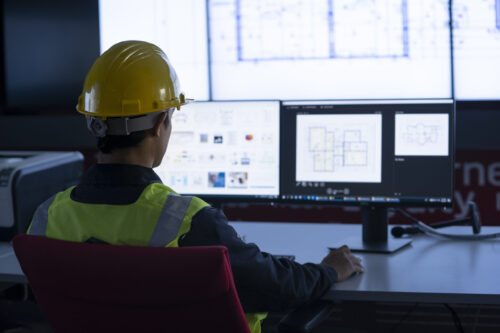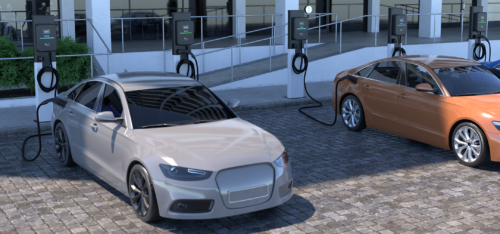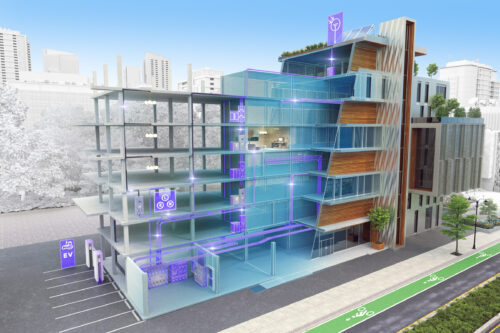Letters: Reader Feedback – 2004-09-01
Prayers for Paul I read CSE on a regular basis and almost always start with the Editor's Viewpoint. I've been a registered fire-protection engineer for 43 years and have enjoyed CSE's frequent inclusion of related articles. The August issue noted the death of Dave Adams and the diagnosis of terminal cancer for Paul Beck.
Prayers for Paul
I read CSE on a regular basis and almost always start with the Editor’s Viewpoint. I’ve been a registered fire-protection engineer for 43 years and have enjoyed CSE’s frequent inclusion of related articles. The August issue noted the death of Dave Adams and the diagnosis of terminal cancer for Paul Beck. I would like you to convey to Paul that he is now on my daily prayer list, for I do believe in miracles and I pray for Paul’s healing and peace.
TONY MASCENA
Remembering Dave
I read with interest about Messrs. Beck and Adams. No relation to the former, I did know something of the latter.
Twenty-plus years ago when I was an EIT in my hometown of Anchorage, Alaska, Dave Adams was just getting his business together. As I recall, he and Boyd Morgenthaler, his mechanical cohort, were a two-man outfit competing against the likes of much bigger consulting firms—my own, for example.
Over the years, I lost track of him as my own field of electrical engineering moved to utility and industrial systems. Dave stayed with commercial and institutional work. Ten years ago I met him for the first and only time. In his office we talked about engineering practices, marketing, the Alaska economy, projects associated with each of us, electrical-mechanical coordination nightmares and what makes for an outstanding engineer.
We disagreed on the latter: Dave believed you could tell everything from an SAT score, but as a Vietnam draftee and Navy nuclear power veteran, I believed in life experiences. And our life experiences, naturally enough, underscored those guiding philosophies. We were opposite poles of the same profession, practicing with delight and intensity in a state so large you could sink any other region of the U.S. in it and have room left over. We never forged our strengths. I moved south, and I had largely forgotten about him and his work until the notice in the Anchorage Daily News recording his untimely death.
Your column reawakened my thoughts about those days, his life and legacy. All I can add is simply this: Dave Adams made a real contribution to Alaska that few friends and colleagues can claim. I may not be able to tell you why specifically, but I know it’s so. I am sorry Dave is no longer with us.
Thanks for reminding me of how swiftly time runs by and how our everyday work is the stuff that life’s accomplishments are made of—even those unremarked upon or noticed by our associates. And sometimes, especially those.
HARRY LYNN BECK, P.E., HLB ENGINEERING, MT. LEBANON, PA.
MasterFormat Mistake
The Specifier’s Notebook “Five Steps for Power Packages,” ( CSE 08/04 p.74 ) makes a common mistake in stating that the 1995 edition of MasterFormat, as published by the Construction Specifications Institute (CSI) and Construction Specifications Canada (CSC), contained a Division 17. It did not. However, in part—as a result of many groups laying claim to “Division 17,” among them, communications, security, railway and road engineers—CSI and CSC acted to revise MasterFormat, and over the course of the last three years worked with these groups and others to address these needs. The result is the 2004 edition of MasterFormat, scheduled for release later this year.
This new document has support from a continuously growing number of organizations, including those that represent consulting engineers. Engineers should make themselves aware of the new MasterFormat 2004 title and numbers, which are currently available for download from CSI’s web site at www.csinet.org/masterformat .
ROBERT B. SWAN, MASTERFORMAT EXPANSION TASK TEAM
Cyber Terrorism?
In reading “Building Automation: A Carefully Orchestrated Symphony” (CSE 08/04 p.19) , I was dismayed by the fact that there was no mention whatsoever of the cyber-security aspect of making BAS wireless.
Back in April of 2003, PBS’ Frontline aired an episode titled “Cyber War!” One of the most sobering aspects of the program, according to leading security and anti-terrorism experts who appeared, was the fact that so many real-world utility systems are already under digital control; it would not be far-fetched to assume that terrorists could hack into these systems to inflict physical damage on the nation’s infrastructure. With BAS going web-based, it just makes it that much easier for cyber-terrorists to infiltrate/attack key high-rises (i.e., those of major financial institutions).
It would be fantastic for you to feature what steps are being taken or planned by leading security firms to increase the cyber-security of BAS and related systems.
FRANK J. SILVA, P.E.
Digital Dilemma
Regarding “Totally Digital” (CSE 06/04 p. 32), the health industry was one of the first to recognize the limitations of digital technology; that is why we have lasers and biotech. But as we head toward immortality, the large number of things we need to do, but can’t, with digital, will become apparent. Who knows? Maybe we will even get around to eliminating the supermarket line or building plasma generators that actually work. So get with it. Go out and buy a laser mouse for your computer.
HUGH COLEMAN, KELSO, WASH.
CAD not Delivering
I read with some interest your article “Is CAD Delivering? Part 1” (Business of Engineering e-newsletter 8/24/04) regarding the use of AutoDesk’s ABS software for 3D design of HVAC/P. We have been struggling with implementation of this recently, and so I have some feeling for what this software does and does not do.
Frankly, the promise of a “total solution” is probably a boondoggle that we should all give up on. It does not coincide with the reality of how A/E work gets done on a typical project. Nor does it recognize that in a typical office, the drafters handle the nitty-gritty of CAD production, which I refer to as the “lines on the paper,” while the engineers handle the design and equipment selection. A drafter drawing an HVAC plan doesn’t know any of the technical data, sizes, elevations or other esoterica about the equipment he or she is drawing. That’s all in the schedule. And I usually don’t get to that until after the plans are partly done.
What would be nice is a system that’s more flexible, could be adjusted for 2D use and could be readily adjusted for varying office standards of layers and symbols. ABS is not it.
JASON CHENARD, P.E., OAK POINT ASSOCS., BIDDEFORD, ME.
Do you have experience and expertise with the topics mentioned in this content? You should consider contributing to our CFE Media editorial team and getting the recognition you and your company deserve. Click here to start this process.





